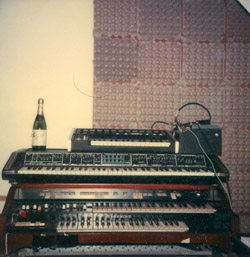Before you can look at some accepted ways to improve your isolation, it’s important to look at all the things that won’t work.
In this excerpt from The Studio Builder’s Handbook (written with Dennis Moody) is a list of various materials that you’ll often see attached to the walls of a space in hopes of increasing the isolation.
However, they really won’t help much at all.
• Mattresses: There are so many things wrong with this that it’s hard to know where to start.
Sure mattresses are made up of a lot of soft material, but it’s not the right kind for sound absorption, won’t affect the low frequencies at all (which are what causes most of the the isolation problems), accumulates mold and moisture, and makes nice homes for rodents and other unwanted critters.
Plus, it’s pretty difficult to get enough of them to cover a room, and they take up so much space for so little benefit in return.
• Egg Crates: Egg crates are light porous cardboard and do absolutely nothing for soundproofing. They can act as a sound diffusor at higher frequencies, but the bandwidth is so limited that they’re virtually useless there as well. Plus, they’re highly flammable! It’s difficult to find enough of them to cover a room, but frankly, even using one is too many.
• Carpet: Carpet attached to the wall is another product that will affect the sound of the room yet do nothing in the way of soundproofing since it doesn’t affect the low frequencies, which are the ones that you’ve got to control for good isolation.
Carpet has exactly the same problem as mattresses in that it will begin to smell over time. Old or new carpet makes no difference, except that older carpet will smell more.
• Foam Rubber: Foam rubber does have some acoustical absorption properties, but once again will do very little for the low frequencies that will cause all of your problems with the neighbors.
It’s can be as expensive as materials with real acoustic control properties, degrades over time, and will burn like crazy if given the chance.
• Rubber: Floor matts, mouse pads, neoprene, or any other variation of rubber will do very little to stop sound coming or going from your room.
Once again, it’s much cheaper to buy proper acoustic materials that are easier to work with, but they won’t help your isolation problem either.
















